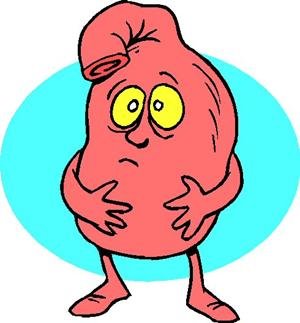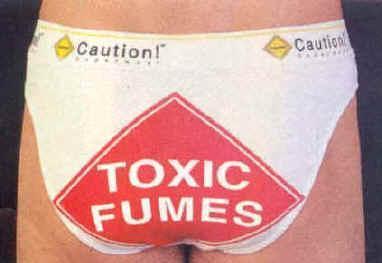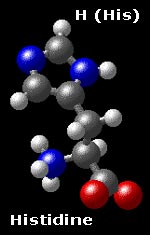Health
Do You have Low Stomach Acid?
 Stomach Acid is More Important than You Think
Stomach Acid is More Important than You Think
Charles Poliquin. Edits by Paula Owens. Photographer David Shankbone
Cynthia Nixon, John Hurt, and Swoosie Kurtz at the 2009 Tribecca Film Festival for the premiere of An Englishman in New York; to look at this image you would never know one of these people is suffering from acne rosacea. Nixon has been doing interviews lately regarding her struggle with acne rosacea. According to her interview in Fitness Magazine it has recently flared up again. Do you think Nixon could have low stomach acid?
Are your muscles getting all the protein contained in that 8-ounce steak? Does your immune system enjoy all the antioxidant protection from the vitamins and minerals in organic fruits and vegetables? Do your supplements work as well as the manufacturer promises? There’s a 50/50 chance that the answer is No. The reason is that it’s not so much what you eat or what supplements you take, but how much you assimilate.
This statement might seem peculiar, but it is true. I’ve worked with countless athletes and individuals who seem to do everything right with their diet and training but make little or no progress in the gym. Their problem can often be traced to low levels of stomach acids, a condition known as hypochlorhydria.
Stomach acid breaks down food, chemically altering it so that the body can extract the required nutrients for proper structure and function, including muscle maintenance and growth. The acid begins the digestion of protein in the stomach and then triggers the pancreas to secrete digestive enzymes and the gallbladder to release bile into the small intestine. The acid is also responsible for killing pathogenic bacteria that enters the body via food.
 A Few of the Symptoms of Low Stomach Acid
A Few of the Symptoms of Low Stomach Acid
How many of these symptoms do you have?
1. Belching or gas within one hour of a meal
2. Desire to skip meals
3. Estrogen buildup
4. Acne rosacea
5. Depression
6. Bloating and fullness shortly after eating
7. Bad breath
8. Loss of taste for meat
 9. Nausea after taking supplements
9. Nausea after taking supplements
10. Brittle fingernails
11. Undigested food in stool
12. Foul-smelling stools
13. Stomach pain
The Acid Test
In our land of abundance, it is hard to imagine that our body’s cells could be starving, especially when we consume high-quality food in sufficient quantities. Yet many of our affluent habits prohibit us from properly digesting our food, leaving our cells weak from undernourishment.
If there is insufficient hydrochloric acid (HCl), proteins will pass into the intestine and putrefy instead of being digested. In addition, carbohydrates will also be left to ferment without adequate digestive enzymes from the pancreas. Fat digestion is also dependent on the acid’s influence on the pancreas to secrete lipase and the gall bladder to secrete bile. Poor digestion of these macronutrients means poor absorption of our basic energy sources.
Low stomach acid prevents adequate absorption of essential minerals such as zinc, manganese and calcium because they cannot be ionized for proper absorption. Cruciferous vegetables are known for their estrogen-detoxification properties through the production of Diindolylmethane from Indole 3C, but this extraction cannot occur without an adequate amount of stomach acid.
Low stomach acid also puts you at an increased risk of food poisoning since you are missing your primary defense against bacterial organisms. It has been shown the drugs which inhibit stomach acid, such as Prilosec and Tagamet, can cause an increase in stomach bacteria and inflammation.
Undiagnosed low stomach acid is linked to various neurological disorders such as dementia and Alzheimer’s because those ailments are linked to folic acid and B12 status (i.e. no stomach acid, no folic acid and B12 absorption). In effect, you could go senile just from low stomach acid.
The Growing Epidemic of Low HCl
After taking numerous functional medicine seminars from digestion experts such as Dr. Nigel Plummer, PhD, from Wales and Dr. Jeff Baker, NMD, from North Carolina, I realized how important it is to monitor stomach acid. In Wales alone, it is estimated that over 40 percent of the adult population is deficient in hydrochloric acid. In the USA, many experts estimate the deficiency also to be in the range of 40 to 50 percent. Some gastroenterologists are now advancing that it is today’s most under-diagnosed ailment.
Over the last four years at my training centers, we have been doing stomach acid challenge tests routinely. In this time I have yet to see a single successful male over the age of 40 with normal stomach acid levels. Actually some of them are actually achloridic, which means that they make almost no stomach acid.
There are many reasons for low stomach acid, such as B vitamin deficiency, excess carbohydrate consumption, hypothyroidism, food sensitivities, H. Pylori infection, soda consumption, and aging.
But the most common cause of low stomach acid is actually stress. Stress experts estimate that we now have one-hundred times more stress than our grandfathers did.
How do you Test for Low HCl? Here are Seven Different Ways
1. From your blood chemistry screen values, or by a urine test
2. A string test where you swallow a string in order to measure your stomach pH – not a pleasant test, incidentally
3. An examination of the reflex point on your abdomen, an inch below the bottom of the breastbone on the edge of the left rib cage
4. Presence of a zinc deficiency; an insufficient amount of this mineral is associated with hypochlorhydria
5. Presence of vertical ridges on your nails
6. Stool testing
7. Amino acid profile tests
Finally, there is a simple test you can do at home, but I suggest you talk to a practitioner qualified in nutritional medicine such as myself before you try it. Nutritionally-oriented practitioners often prescribe this test along with a zinc challenge test. It requires a bottle of Betaine HCl, at 200 mg potency per capsule.
Another Simple Test for Low HCI
Here is How it is Performed:
Step 1 – Have a high-protein solid meal (no shakes). Let’s say for illustration purposes an 8-ounce steak and vegetables.
Step 2 – Eat half the protein, roughly 4 ounces of the steak.
Step 3 – Swallow a 200mg capsule of HCL.
Step 4 – Eat the other half of the steak and the vegetables.
Step 5 – Wait 15 minutes.
Step 6 – If your stomach acid is normal, you will feel like you just drank a hot cup of tea. If you feel nothing, you need HCl as a supplement.
So, What Do You Do Next?
At every meal repeat steps 1 to 6, upping the dose one capsule per meal until you feel the burning sensation. So, if it takes five meals to get a burning sensation, you need on average four capsules per meal. If you get to seven capsules and you have no burning, stop the test–you are achloridic!
You are getting better when you start feeling a burn at your initial determined dosage. For example, if you found five capsules were your initial need, you may find three days later it starts to burn, at that time cut back to four capsules with a typical high-protein solid meal. And so on.
Most people achieve normal levels within eight weeks even when they start at seven capsules, but some individuals take as long as 18 months. I have two clients who need two caps a day permanently. Why? Because neither one will ever escape their stress levels–one of them is a real estate mogul, and the other is a business woman who is a marathon runner with a family taking care of the household duties.
Once you go off HCL, it is suggested by most functional medicine experts to take 2g of histidine a day for eight weeks to support HCl production. Take a great multivitamin formula once a day upon engaging in HCl therapy, as it will accelerate the healing. Make sure that your HCl product also contains the probiotic pepsin and the digestive enzymes papain and pancreatin, as they have a synergistic effect with HCl therapy.
One of the most common positive effects my clients get from HCl therapy is enhanced sleep. Why? Because they are finally absorbing the supplemental magnesium they have been taking. Minerals need an electric charge to be absorbed. You need sufficient HCl to provide that charge to the minerals.
In addition to the above HCl protocols, here are a few other suggestions to normalize your stomach acid levels. First, avoid carbonated drinks. Second, avoid all-you-can-eat buffets, as they are America’s leading source of food-borne pathogens. Finally, there are numerous herbs that can contribute to raising HCl, such as gentian, peppermint; and ginger, but be aware very few controlled studies exist on this topic.
Positive Effects of Enough HCI Stomach Acid
Over the last four years, I have been amazed how a correction in HCl deficiency has led to not only dramatic improvements in physique and strength but also improvements in a variety of health parameters. Interestingly enough, in strength-trained individuals those improvements are often associated with gains of 15 to 18 pounds of lean body mass within two months! Why? They are now absorbing proteins and minerals.
If you suspect you are low in stomach acid, you must address this issue with the utmost importance. You cannot make adequate use of your food or your supplements if you cannot break them down for proper absorption. It’s true, not only are you what you eat, you are what you assimilate!
Tagged acne rosacea causes, belching, boomer style magazine, building muscle mass, Cynthia Nixon, foul stools, gas, HCI, John Hurt, low stomach acid, Paula Owens Holistic Practitioner, Photographer David Shankbone, solutions for rosacea, Swoosie Kurtz


